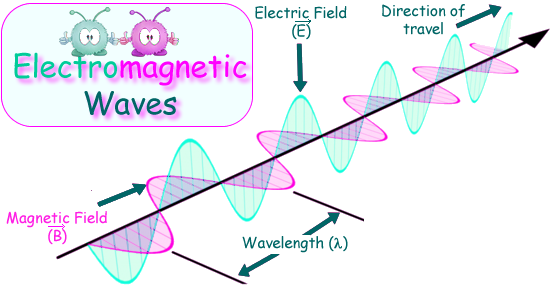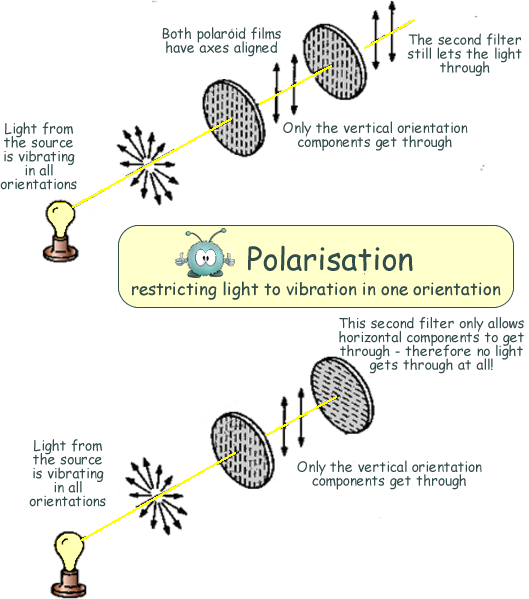    |
||||

Transverse Waves |
||||
|
In the illustration above the vibration causing the energy to travel along the rope is applied at right angles to the rope - along which the energy travels.
You need to describe the vibration as being perpendicular (at right angles ) to the direction the energy is carried by the wave.
Nothing 'physical' vibrates when pur electromagnetic enery is transferred - the vibrations are transverse variations in electric and magnetic fields - that is why they are called electromagnetic waves. Those variations in the fields are perpendicular to each other - as shown in the diagram. It is not until A Level that you need to know much detail about electromagnetic waves - but I think it helps to know at GCSE that the electromagnetic spectrum of energy transfer is so called because electric and magnetic fields are varying - in the form of a transverse wave pattern... and you do have to know that electromagnetic waves are transverse!
|
||||
 |
||||





